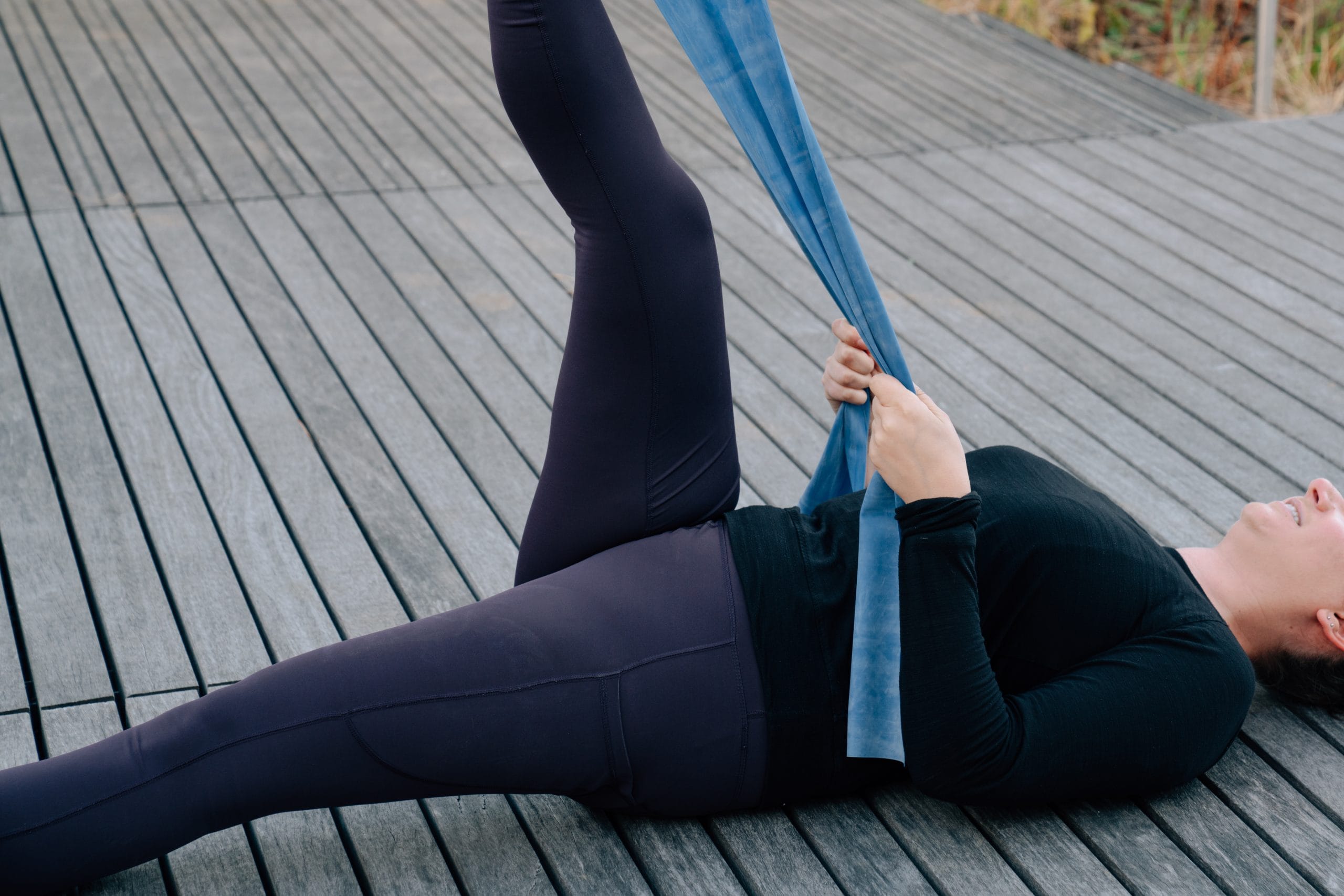To Stretch or Not to Stretch? That is The (Runner’s) Question

Pure Sports Medicine
- 10 August, 2020
- Running
- 5 min read
To Stretch or Not to Stretch? That is The (Runner's) Question

If you have your eyes fixed on your goals and you’re thinking “my Strava stats need to be better” or “I want to be able to run long enough to see those results”, then you’re in the right place.
Many runners love running, but don’t necessarily love stretching. So, we thought it would be interesting to dive into some of the new thoughts and theories around stretching, and its mythical qualities, versus the current scientific facts.
Myth 1: Being flexible makes me run faster.
Stretching has a dogma around it for being an integral part of a training routine for athletes and weekend warriors alike. In the hope that it aids in our performance and helps us avoid tightness or injury. The typical way stretching has been performed is usually by adopting multiple different poses affecting a single muscle group with a minimum of 30secs hold per stretch.
You’re now likely wondering, ‘so are elite runners flexible?’ and the answer, in short, is: no, they aren’t. There is evidence to suggest that typically, elite runners are less flexible than their non-elite counterparts (Baxter et al. 2016). Posthumus, Schwellus and Collins (2011) completed a survey that investigated the presence of a gene known as COL5A1 – the inflexibility gene! They found that endurance runners who possessed this gene had a considerably higher running economy than the other runners.
This is very interesting, as a study by Gleim, Stachenfeld and Nicholas looked at untrained individuals and found that the participants with the lowest flexibility consistently had the most economical running styles. Their conclusions stated that being stiffer lead to a reduction in excessive motion and therefore an increase in the energy related to the task at hand – running.
It has also been suggested that tightness in the muscles and tendons could increase elastic storage and therefore reduce the oxygen demand of these tissues. Ultimately the task is less demanding.
A good way to look at it is to think of your muscles like springs, we want our springs to be stiff (think Ferrari sports cars ‘stiff’) enough to positively affect our performance. Should they be like a ‘Ford Fiesta’ they won’t be as efficient at propelling the energy forward. So, there you have it, tight is alright!
Fact 1: Flexibility can make you less economical and potentially slower.
Myth 2: Stretching before running reduces my risk of injury.
Stretching before exercises, or as part of an exercise program, has long been thought to reduce injury risk. Common running-related injuries include medial tibial stress syndrome (shin splints), plantar fasciitis, Achilles tendinopathy, stress fractures and various knee injuries. All have been purported to be preventable by stretching as part of a runners training programme.
The debate surrounding the effects of stretching however, surfaced after it was suggested that acute stretching (immediately before) exercise had the ability to significantly inhibit performance on short, explosive events including the leg press one repetition max (Bacurau et al., 2009), 20m sprint performance (Nelson, Driscoll, Landin, Young, & Schexnayder, 2005) and vertical jump height (Young et al., 2001) due to the physiological changes seen in the muscle and the decreased ability for it to store elastic energy (Wilson et al., 2010).
There have been no additional studies to show that acute stretching could improve the performance of runners and notably no studies have reported positive effects for endurance runners (Baxter et al. 2016).
We have mentioned that runners need to be the right kind of stiff to improve their performance and if stretching plays a negative role in this stiffness then it can be theorised that loosing this stiffness or running economy could lead to an increase in muscular load and effort, potentially leading you to develop a muscular injuries.
The majority of studies suggest that long-term stretching can potentially increase the pliability of the muscle-tendon unit. So, you may be stretching yourself towards a problematic Achilles.
Fact 2: Stretching may increase your risk of injury and has no benefits in preventing injury.
Myth 3: Stretching helps with Delayed Onset Muscle Soreness.
DOMS are a very common side effect to intensive bouts of exercise. DOMS cause discomfort in the muscle and is the leading cause of reduced performance in subsequent exercise bouts. The specific cause of DOMS is unknown; however, it is thought to be triggered by a series of biochemical changes that occur as a result of muscle damage.
Baxter et al. (2016) summarised the evidence very well and found that a number of studies have investigated the relationship between stretching and the presence of DOMS following exercise and the unanimous response is that the duration and intensity of DOMS cannot be influenced by stretching. There was no evidence to suggest stretching could assist in the reduction of DOMS for any sporting discipline.
Like all of us runners, we just have to “keep calm and suffer those stair climbs and couch sit downs” after leg day. There is some loose hope in the science however, to suggest if you are suffering from DOMS you can try massaging, icing or hot and cold therapy.
Fact 3: Time, load management and maybe a massage are all you need.
In conclusion, the literature suggests that stretching poses no significant advantage to runners. Pre-run stretching can reduce running economy and performance and long term stretching additionally appears to have no advantageous effects.
In relation to injury risk, stretching seems to have little significance in preventing running injuries. Runners are at a higher risk of overuse injuries such as iliotibial band syndrome, stress fractures, Tendinopathies and plantar fasciitis, and the literature suggests that stretching cannot reduce the prevalence of these injuries.
The one caveat we will concede is that this is only looking at Runners, and that in extreme cases where someone’s movement falls far outside of a ‘normal’ range of movement (being too stiff), like after an injury this may be problematic.
Strength training perhaps? But that’s for another day! Happy trails, roads, treadmills or whatever terrain choose today!
References:
1. Bacurau, R., Monteiro, G., Ugrinowitsch, C., Tricoli, V., Cabral, L., & Aoki, M. (2009). Acute effect of a ballistic and a static stretching exercise bout on flexibility and maximal strength. Journal of Strength and Conditioning Research, 23, 304–308.
2. Claire Baxter, Lars R. Mc Naughton, Andy Sparks, Lynda Norton & David Bentley (2017) Impact of stretching on the performance and injury risk of long-distance runners, Research in Sports Medicine, 25:1, 78-90.
3. Gleim, G., Stachenfeld, N., & Nicholas, J. (1990). The influence of flexibility on the economy of walking and jogging. Journal of Orthopaedic Research, 8(6), 814–823.
4. Nelson, A., Driscoll, N., Landin, D., Young, M., & Schexnayder, I. (2005). Acute effects of passive muscle stretching on sprint performance. Journal of Sports Sciences, 23, 449–454.
5. Posthumus, M., Schwellnus, M., & Collins, M. (2011). The COL5A1 gene: A novel marker of endurance running performance. Medicine & Science in Sports & Exercise, 43(4), 584–589.
6. Wilson, J., Hornbuckle, L., Kim, J., Ugrinowitsch, C., Lee, S., Zourdos, M. … Panton, L. (2010). Effects of static stretching on energy cost and running endurance performance. Journal of Strength and Conditioning Research, 24(9), 2274–2279.
7. Young, W., & Wand Elliott, S. (2001). Acute effects of static stretching, proprioceptive neuromuscular facilitation stretching, and maximum voluntary contractions on explosive force production and jumping performance. Research Quarterly for Exercise and Sports, 72, 273–279.

Advice
Over the last 20+ years our experts have helped more than 100,000 patients, but we don’t stop there. We also like to share our knowledge and insight to help people lead healthier lives, and here you will find our extensive library of advice on a variety of topics to help you do the same.
OUR ADVICE HUBS See all Advice Hubs

